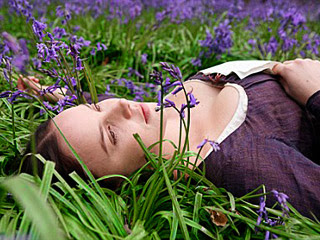When I hear the phrase 'film still,' I'm flooded with memories of movies that I've seen where the cinematography is breathtaking and it reminds me why I love being a photographer. By definition, a film still is "a photograph taken on the set of a movie or television program during production by a movie stills photographer...shots can be taken as part of the filming or separately posed."Source1
I think that the best definition of 'film still' comes from an article I came across called "The History and Aesthetics of the Classical Film Still," written by Steven Jacobs. "In several languages, the English term ‘film still’ refers to images taken on the set with a still camera and to an extraction of one of the sixteen or twenty-four single frames that together make up a one-second piece of film. In film publications using a more accurate terminology, the reproduction of a film frame, which Roland Barthes called a photo- gramme, is usually labelled as a frame enlargement. These frame enlargements often show a somewhat coarse-grained quality because they are magnifications of a single frame from an often battered celluloid 35-mm film strip. In addition, frame enlargements are often blurred because the movie camera operates at a shutter speed that is not always fast enough to freeze movement. On the cinema screen, the picture does not appear blurred because twenty-four separate frames of it – each one pushing along the action, each one with its own individual grain pattern – pass through the projector every second. Hence film frames that work perfectly on screen are often unsatisfactory as still pictures." This article is great because it explains in so much depth, the job of being a still photographer, how these photographs came to be and the importance they had on serving a film. A lot of the time, a film still is what actually sold the movie. "The aesthetics of the film still, which implies a specific kind of dealing with light, focus, narrative, time, temporality and the instantaneous. Finally, it investigates how these elements were taken up by some prominent contemporary art photographers and video artists." From the early 1900's through the 1950's, the way movies were shot had completely changed. The lighting sets had improved, the locations were chosen carefully, etc...Yet still, the major aesthetic stayed, the way an actor was posed, the 'statuesque beauty' that never left a photograph are qualities that have carried over to today's films.
Some stills that I think are wonderful:
From "Bright Star" (2009)
From "Into The Wild" (2007)
From "Gone With The Wind" (1939)
From "Atonement" (2007)
From "Breakfast at Tiffany's" (1961)
For our film still/self portrait project, I chose a still from "Breakfast At Tiffany's." I love the style of the 1960's celebrities and Hollywood in general from that time period, plus everything that went into the film is great--the clothing, the hair/makeup, the use of Manhattan as the scene, the story itself, the cast, etc...
When thinking about film stills, it's hard not to think about the focus of them, which are the actors/actresses--celebrities. What is a celebrity and where did the term come from?
The idea of a celebrity has definitely changed over the years. The word was first used in ancient times, to describe someone with immense power and notability, with effect on the lives of the people, such as the Gods, Olympic champions, religious figures (saints, popes), up through the Renaissance with the great artists, etc...-- A History of Celebrity.
link. Through the years the idea of celebrity became less about personal feelings of "the common people" and more about regular people getting their '15 minutes of fame.' Actors, actresses, singers and bands, and more recently reality television stars began to take over Hollywood and other cities notable for entertainment. I can't turn on the television at 7:30 pm without hearing about Brangelina's new adopted child or that a real housewife from New Jersey punched someone and got arrested. While I think there are many 'celebrities' who use their fame and money to make things better in our world, the amount that selfishly just want the fame outweighs the prior. As entertained I am by watching "Jersey Shore," I think that it's us who helps them achieve celebrity status. I guess it has always lied in the hands of 'the regular people,' right?
---------
Many artists have been inspired by film stills, a lot in the Pop Art Movement such as Andy Warhol, etc...Cindy Sherman of course, a photographer who re-created film stills of her own self-portraits. In a 2007 Vanity Fair photo shoot, Annie Leibovitz and Michael Roberts took a film noir approach to "Killers Kill, Dead Men Die," in which they shot celebrities taking the rolls of a 1940's crime film. This is a clear example of being inspired by film stills and the history of films in general.


































